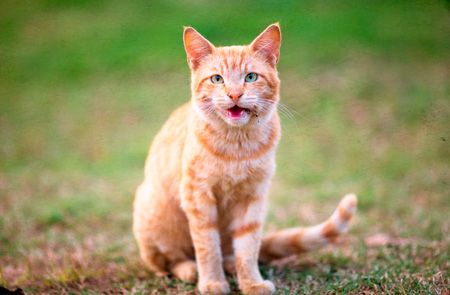Gasp! Why to worry about feline lungworms
Lungworms low on your list in a cat with respiratory signs? This article says you may want to raise your alert level.

Feline lungworm disease may be increasing in number and geographic distribution. In this review, veterinarians from the Teaching Veterinary Hospital at the University of Teramo in Italy also have emphasized additional species of lungworm that can serve as pathogens in cats. You're most familiar with the lungworm Aelurostrongylus abstrusus, but it's important to consider Capillaria aerophila and Troglostrongylusbrevior infections, too. Lungworms' geographic range may be expanding-which may be related to global warming and associated animal movement, vector adaptations, and changes in wildlife habitat and numbers-or heightened clinical awareness and confirmation of these infections in domestic cats may be occurring. Since the problem may be growing, it is important for all practitioners who are treating cats be aware of this often missed pathogen.
Why are we missing it?
It is important for veterinarians to recognize that lungworm infection can masquerade as other common feline diseases such as pulmonary toxoplasmosis, respiratory mycosis, feline asthma and others. It is also important to note that radiographic features are not pathognomonic.
The trials of traditional testing
Since lungworms are a growing concern, especially in Europe, it is important to be aware that no serologic assay is yet available. Direct fecal smears and common flotation methods can be unreliable for detection of lungworms. In the future, innovative molecular diagnostic assays may help simplify identification of feline lungworm disease.
Exam room application
In any cat presented for evaluation of signs suggestive of respiratory disease, lungworms should be considered. To better find lungworm infections, veterinarians should consider a Baermann fecal migration technique for stool sample examination, be watchful for trichurid eggs in any feline fecal sample, and be careful to discern between whipworm and capillarid infections. Anthelmintics have shown effectiveness in treating feline lungworm infestation, including topical moxidectin/imidacloprid, emodepside/praziquantel, selamectin, and eprinomectin and oral milbemycin. Further studies are warranted to explore the best options for preventing and treating lungworm infections, but, as the authors state, treatment seems to be straightforward and effective.
Traversa D, Di Cesare A. Diagnosis and management of lungworm infections in cats: Cornerstones, dilemmas and new avenues. J Feline Med Surg 2016;18(1):7-20.
Link to abstract: http://jfm.sagepub.com/content/18/1/7.abstract?rss=1
Kathryn Primm, DVM, owns and practices at Applebrook Animal Hospital in Ooltewah, Tennessee, and is the author of Tennessee Tails: Pets and Their People.